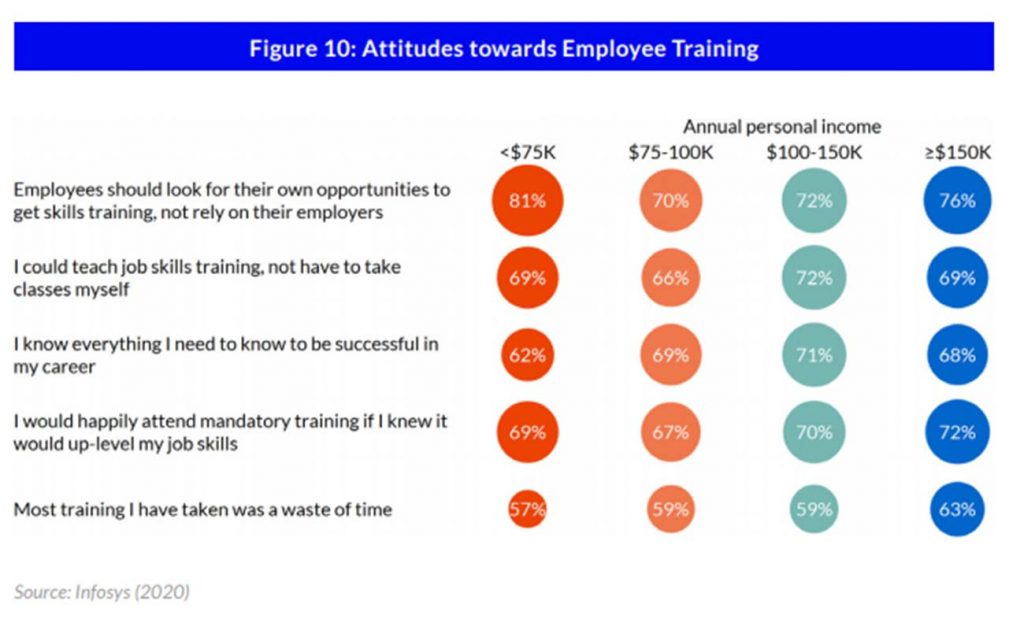Earlier this year the Milken Institute and Infosys published Future of Work Insights for 2021 and Beyond. The report was based on feedback from 1,000 managers and employees that was conducted by Infosys. The key takeaways of the report included:
- a broad shift towards remote work and hiring
- net satisfaction with remote work and productivity
- high trust of employees in remote work
- a raise in employee skills training focused on working remotely
All good news right – we made monumental shifts in the ways we worked – and we came out the other side relatively, ok? Or did we?
Am I On My Own?
One of the areas covered in the report was employees’ attitudes towards employee training (if you downloaded the report – page 14) – and the results are quite startling:

- 81% of employees making less than $75K (hello frontline workers) say employees should look for their own opportunities to get skills training – and not rely on their employers.
- 69% of the same audience says they can teach job skills training – and not take the classes provided.
- 57% of the same audience feels most of the training they have taken was a waste of time.
As learning professionals, we are constantly asked to demonstrate the value of what we do. And while we can look at this data and perhaps say “well it is different here” or “I know my organization is better than this” – I would bet there is a nagging voice in the back of your head asking “what if I am wrong”
So Now What Do I Do?
The good news is that as organizations, we are always evolving and adapting, and that is never truer than when it comes to learning and development. So how do you begin to pivot based on the insights presented in the report? We have a few thoughts:
- Determine if you need to do a better job of connecting all your workforce to relevant training. Give special consideration to your frontline workers who may not have a company device – can they access what they need through the devices they have? Is the content optimized for mobile (phone/tablet)? Are they able to access the company Wi-Fi on their device – or are they burning through their own data plan?
- Consider how you can tap into your audience to be session leaders. Find those in the population who could truly “teach the course” and tap into them – it is a great opportunity for them to stretch and build new skills – and helps make a more indelible connection to the audience.
- Make sure your WIIFM is clear – even for your most foundation program – make sure your audience knows what is in it for them and how it connects to their work in the organization.
What strategies or other new approaches would you put in place? Let us know, we would love to hear from you – we are all in this together, and together we learn.

